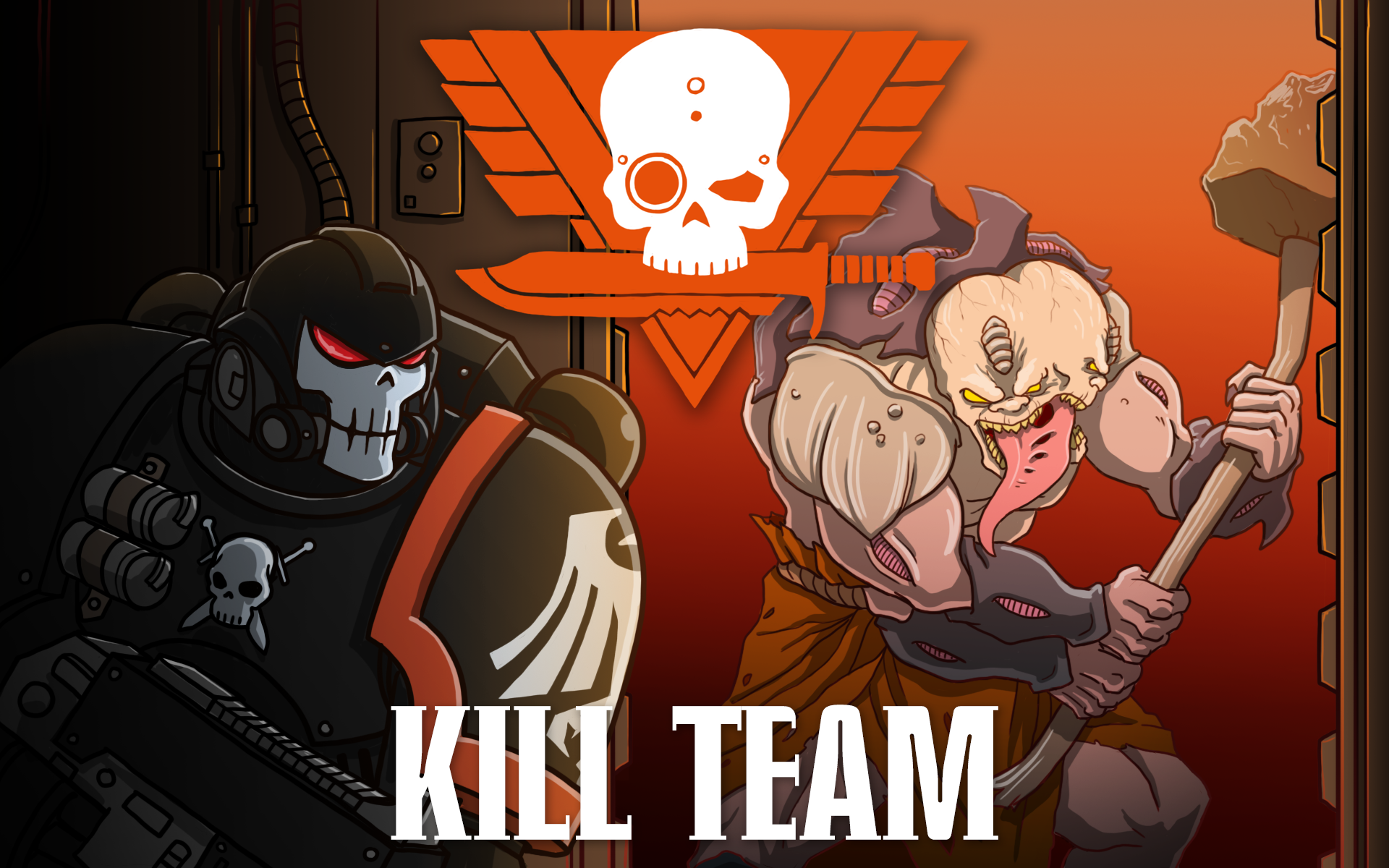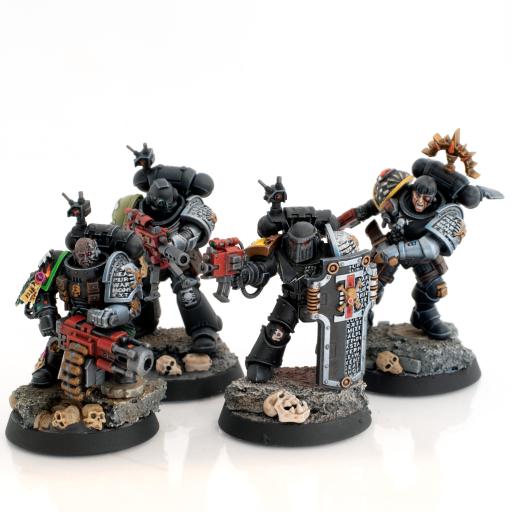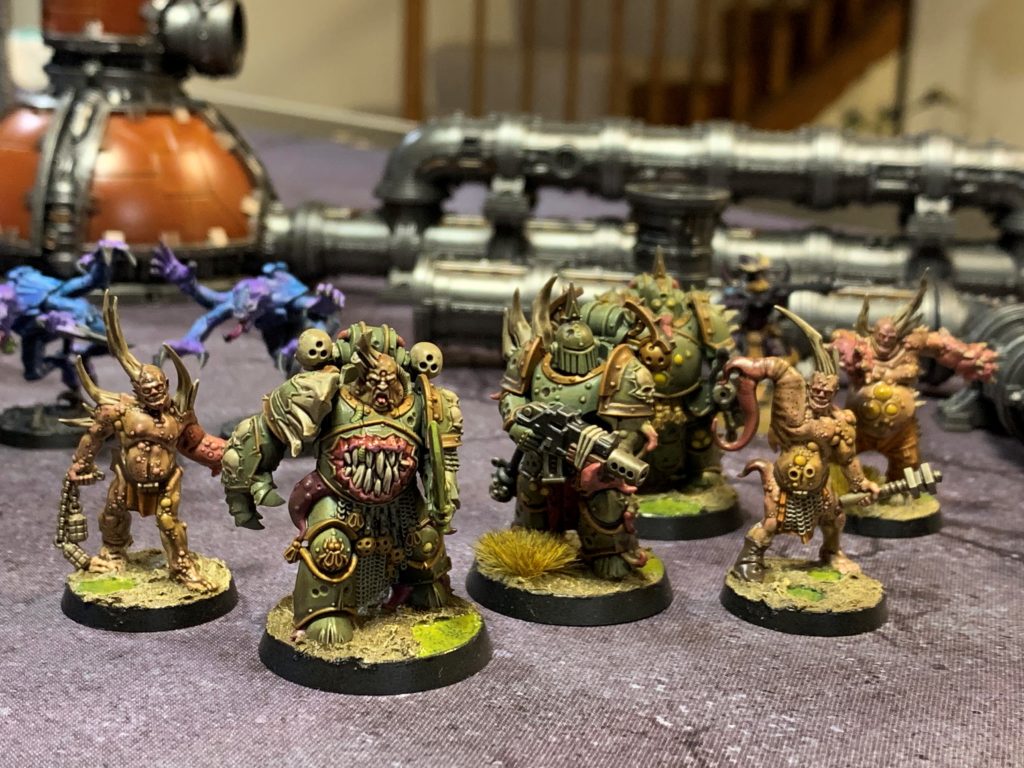The Las Vegas Open is quickly approaching and with it, the 2020 Kill Team Championships. This year the event is bringing us an entirely new Kill Team format, and I have a sneak peek of the rules. So today I’ll be reviewing those rules, talking about what they mean, and giving some of my thoughts on them.
TheChirurgeon’s Note: Even if you aren’t participating in the LVO 2020 Kill Team Championships, it’s worth looking at these rules as an alternate way to play Kill Team in your casual games. There are a lot of interesting tweaks and adjustments here and we think they make for a lot of very fun, balanced games.
You can find the tournament schedule here. The drive containing all of the rules is here.
The Basics
Previously, major tournaments have been run on missions similar to the Kill Team: Arena missions, but the missions at the LVO Championship will be more similar to the ITC missions for 40k.
- Players start with a roster of 20 models
- Before the game starts, select a legal 125 point team from the models in your 20 man roster and select 3 secondary objectives from a list of 18 that are available in every mission
- Randomly choose the mission map
- Play a 4-turn Kill Team game
- Each turn, you can score the following
- Primary Objectives
- 1 point for killing a model
- 1 point for killing more models than your opponent did
- 1 point for holding an objective
- 1 point for holding more objectives than your opponent did
- You at most 12 points from primary objectives
- Secondary Objectives
- Each secondary objective has its own scoring rules
- Each secondary objective can score at most 3 points
- Bonus Objectives
- Each mission has a bonus objective that’s designed to be relatively neutral and hard to achieve
- You can score at most 3 points from the bonus objective
- Primary Objectives
There are also a few clarifications and special rules. For LVO you can end a charge partially up a wall if it brings you in melee range, there are extra subfactions for factions that don’t have them like Kroot and Sisters of Battle and there’s an LVO-only FAQ clarifying rules questions they’ve had to answer before.
One thing worth noting here is the 125-point team limit. That’s something we saw at the SoCal Open and it’s becoming much more popular and generating more discussion in the community. It gives some teams more room to work with, and potentially benefits horde teams a little more, since they can take tons of bodies and their fancy toys, while more elite teams still struggle to hit their sweet spot. But as we’ll see, elite teams have other advantages going for them.

Primary Objectives
The primary objectives for the Kill Team Championship are derived from the ITC 40k Missions. Each player has the following primary objectives in each game, repeated from above:
- Primary Objectives
- 1 point for killing a model
- 1 point for killing more models than your opponent did
- 1 point for holding an objective
- 1 point for holding more objectives than your opponent did
- You at most 12 points from primary objectives
If you remember one thing from this article, remember that this is very different from the other big tournaments. You can probably still look at the lists from those tournaments because people tend to take good things, but Adepticon, NOVA, the SoCal Open, and even last year’s LVO all had missions that rewarded you much much more for holding objectives than for killing anything. The horde lists with no firepower that did well at those events probably won’t do nearly as well at LVO, especially when they’re up against very tough, elite kill teams that may be able to reliably avoid losing more than one model per turn. More on that in a moment.
Scoring all of your Primary Objective points is about counting to 12 in four turns. The two reliable ways to do that are to either score hold more/kill one every turn or hold one/kill more every turn (Editor’s Note: Though be on the lookout for opportunities for “4-point turns,” which Naramyth talks about in his article on playing from behind. It’s a 40k focus, but many of its lessons are applicable here). Both of those need you to hold at least one objective (easy) and kill at least one enemy model (potentially difficult). All of the missions include at least one objective that’s safe to hold starting turn 1, but many teams don’t have the ranged firepower to guarantee a kill first turn, and even if you have the firepower if the enemy only has 3-5 models you’re unlikely to space them out properly to make full points. This means they’ll need to either manufacture a 4-point turn during the game, or more likely, they won’t be able to score the maximum points for primary objectives.
Given the fact that you can’t guarantee that you’ll get all 12 points every game, you need to look at denying points to your opponent. It’s hard to deny the Hold One objective, but if you’ve got a reasonable number of models and don’t mind being in melee (such as Orks, AdMech, Marines, Aeldari, or Tyranids) you can fight to keep your opponent off of objectives. Keeping your opponent off of kills is more interesting. If you have a small, elite team (Custodes can get down to 2-3 models) then in addition to putting in the work to kill your tough-as-nails models, your opponent also needs to space out their kills to avoid leaving points on the table and also make sure that you never get a chance to hide a model that they need to kill. Larger teams won’t be able to guarantee that the enemy doesn’t score this. This is one of the key reasons we expect smaller, elite teams to perform better at the LVO 2020 Championship than they historically have.
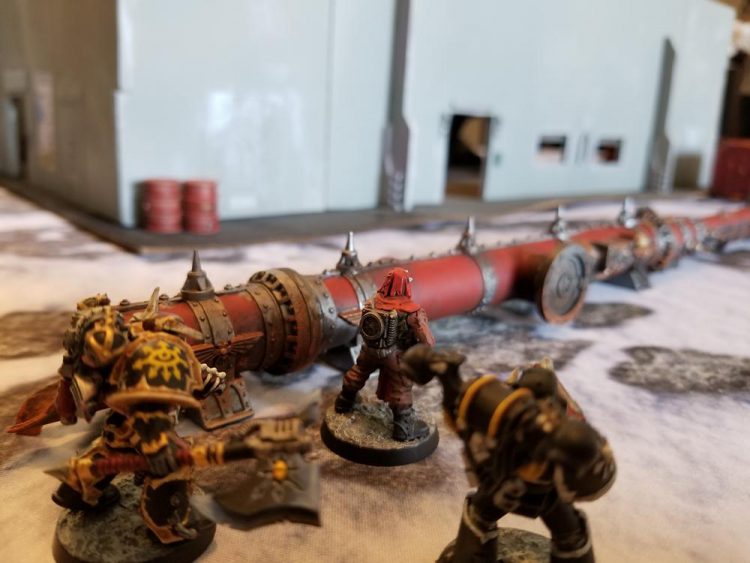
Secondary Objectives
In addition to the primary objectives that are always in play, each player chooses three secondary objectives from the following list at the start of the game. As always, you want to pick secondaries that you will achieve on a path to victory and which you can reasonably hope to max out over the course of four turns. Each secondary objective is worth a maximum of 3 VP.
- Relic Hunters: When an enemy model is taken out of action, place a 1″ token where that model was. At the end of the battle round if any models from your kill team are within 1″ of the center of these tokens, remove one token and score 1 VP. This is great for teams that expect to be killing the enemy at close range and then moving up aggressively, but watch out for enemies that can counter-charge you.
- Hip Shot: At the end of the Shooting phase, score 1 VP if you made a shooting attack that killed an enemy model within half range of the attack. If you’re taking a team with strong ranged weapons like Guard/AdMech plasma this is a good choice, but I’d be cautious of taking this in a team like Aeldari where there’s a good shooting component but you do a lot of your actual killing in melee.
- Cut Apart: Score 1 point if you killed an enemy in the fight phase with an attack this turn. This one’s pretty obvious, if you think you will kill things at least 3/4 turns in melee, take this.
- Death From Afar: Earn 1 VP if you kill an enemy model with a shooting attack at long range. You can achieve this multiple times per turn. This objective can be counter-intuitive because most heavy weapons have a very long range to begin with and so will be mostly shooting at enemies within half range. This is best with short ranged auto-hitting weapons like flamers or the Deathwatch Frag Cannon that count as long range at 4″ but don’t suffer from penalties to hit.
- Pivotal Point: At the end of the battle round, score 1 VP if you have more models within 2″ of the center of the board than the enemy does. This one is reliable if you have the models with the right mobility. Positional objectives like this are nice because they don’t have a lot of randomness and you can reliably know whether you can achieve them going into the game.
- Engage On All Fronts: At the end of the battle round, score 1 VP if you have a model in each table quadrant. This is a little harder to achieve but it’s another positional objective that you can guarantee scoring if you have enough models with high movement values.
- Disengage: If a model of yours fell back or retreated and did not shoot in the shooting phase, gain 1 VP. You don’t have a lot of control over this, but it’s the sort of objective you can pick if you know that your opponent has to let you score it. This can be a little unreliable though if your opponent can phase charges out over several turns or they can trap your units in. You can also play this proactively by charging and then falling back, but you need a first turn charge to make that a reliable way to score 3 points for this.
- High Profile Targets: When an enemy specialist other than the leader is killed, score 1 VP. If you think your opponent will play aggressively with their specialists and you can kill them, take this (look out for teams running Zealot/Combat and Medic/Veteran as their three non-Leader specialists). There are several factions, most notably guard, that take more than 3 specialists because of special characters like Pious Vorne. This objective is better against those factions.
- Intimidation: When an enemy falls back or retreats, score 1 VP. You can score this multiple times a turn.This is the opposite of Disengage, and it’s easier to score if your opponent can’t afford to stay in melee with you. keep in mind that this is a punisher objective and it gives your opponent a chance to find a way out of the puzzle.
- Daring: At the end of the battle round score 1 VP for each objective you control with a single model that has no friendly models within 6″ and the objective is closer to the enemy deployment zone than yours. This is hard to achieve but I can imagine several cases where a fast horde would be able to claim an out of the way objective that an elite team can’t contest.
- Vicious Assault: At the end of the Movement phase gain 1 VP if two or more of your models successfully charged. There are a lot of teams that can reliably trigger this (White Scars Marines, Orks, Tyranids, Aeldari, Harliequins), so it seems like a safe choice for those armies.
- Steadfast: Score 3 VP at the end of the game if you controlled an objective every single round. There will be some games where you just look at the board and realize that this is achievable because of how the objectives were placed, how that plays with LOS and how the enemy can move. If you think this is one of those games, then take it. But keep an eye out for enemy units that can teleport in and disrupt this.
- Territorial: At the end of the battle round score 1 VP if you killed an enemy in your deployment zone or the enemy deployment zone. I can’t imagine being able to reliably guarantee this objective 3 turns out of 4 so I can’t recommend it.
- Proximity Alert: At the end of the battle round score 1 VP if there is an enemy model within 2″ of two or more of your models. This is another positioning objective, which makes it reliable if you have the right models. This is one where killing works against you so think about how often you’ll kill your way out of achieving this.
- Recon Sweep: At the end of the round score 1 VP if there is a model from your team wholly within the enemy deployment zone. This is very achievable in some deployment maps and matchups, but watch out for enemies that can zone you out.
- Reconnaissance: Score 1 VP if you have models within 1″ of at least two different board edges. Models in your deployment zone don’t count. Again, this is a positional objective so you should be able to figure out how achievable this is before the game starts since it doesn’t rely on opponents making decisions or random chance. This is worse than in other formats because the LVO format doesn’t promote keeping throwaway models around.
- Thin Their Ranks: Earn 1 VP if you killed 2 or more models in a turn. This isn’t too reliable unless you’re a very aggressive team fighting against a horde, but there will be cases where you can reliably achieve this, especially if the enemy took too many models.
- Undaunted: Score 1 VP if two or more of your models fired Overwatch in a movement phase. This is another “punisher” (see the Magic: the Gathering card mechanic where an opponent controls what happens), so if your opponent can find a way out of the puzzle they can deny this objective. More often than not, they’ll have the advantage on this one because they can see how you react to the first charge, creating an interesting tug-of-war where you want to stop them from being too aggressive but also score the points.
Bonus Objectives
Every mission has an extra bonus objective that any player can achieve. These max out at 3 VP. These are all designed to be relatively neutral but do promote certain types of play. Keep these in mind when building your roster but you can only get 3 points here so don’t try to achieve these if they compromise your main plan.
- Mission 1 – Hot Shots: If you have a Specialist contesting one of the objectives near the enemy deployment zone, you gain 1 VP. This pushes you towards fast and aggressive specialists rather than back line snipers and will play into the High-Profile Targets secondary objective.
- Mission 2 – Drop Site: Gain 1 VP each turn you control the objective furthest from your deployment zone and the objective furthest from the enemy deployment zone. This won’t be easily achievable for most teams. I’ve tried playing this and it won’t come up unless you’re cleanly winning.
- Mission 3 – Area Secure: If you have a model wholly within the enemy deployment zone and they have no models in that zone at the beginning of the turn, gain a point. This isn’t one you can plan for from the start, but if you see the opportunity arise it’s easy extra points. Your opponent might move all of their models out of the deployment zone without thinking and you can just rush a model in.
- Mission 4 – Hold the Line: Once per turn, if you kill an enemy contesting an objective on on your side of the board gain a VP. This is another objective that relies on the opponent doing something but if they are melee it might be in their path to victory so snag it if it comes up.
- Mission 5 – Surrounded: At the end of the turn if you control the two objective markers closest to the edge of the battlefield gain 1 VP. This rewards you for winning. You probably won’t care about this in the battle but remembering to pick it up will help you pad your CP to increase your standing in the tournament.
- Mission 6 – Stolen Intel: After deployment but before the first turn, choose a model from your team as the carrier. If that model is unshaken and in the enemy deployment zone at the end of the game gain 3 VP. Another win more objective. You can try to get the enemy to focus the wrong model by nominating something unimportant or play it straight and try to increase your standing in the tournament.
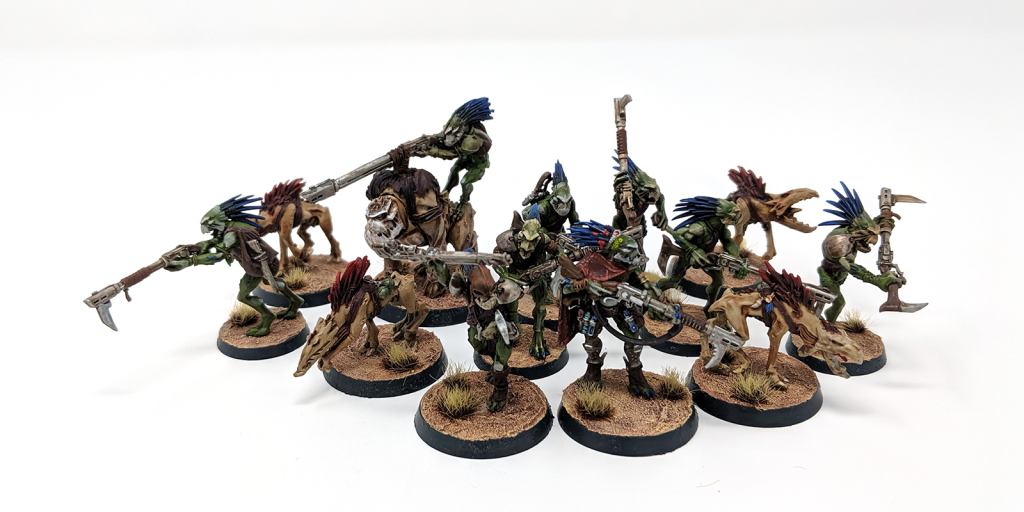
Extra Subfactions
The LVO TO decided that some factions were left behind when Elites gave the main factions a selection of subfaction traits to choose from so they created extras. None of these look game-breaking but it’s a bit of free extra power and it helps shore up some of the more neglected factions from the Kill Team Annual.
Kroot Mercenaries
Kroot get Paths, and they can take up to 4 Krootox Riders. Cavalry cannot be drawn from Paths.
- Path of the Silent Step: When a model from this path is obscured, enemies shooting at it suffer an additional -1 to hit. You’re still a bunch of T3 guys with t-shirt saves for 6 points but this makes you legitimately tough against low accuracy shooting.
- Path of the Seven: Add 1 to saving throws. This is weaker in shooting than the Silent Step, but you get the save in melee as well.
- Path of the Wind: If a model in your team advances you can re-roll the advance. This is probably the weakest since Kroot have access to faster models already.
Elucidian Starstriders
Starstriders have Ship Crews, and can take an unlimited number of basic voidsmen.
- Crew of the Truehawk: All ranged weapons get +1 AP. This is a serious upgrade that lets them take down the power armored factions.
- Crew of the Vanguard: Start the game with one extra CP. This is probably weaker than the Truehawk.
- Crew of the Ultimatum: You can re-roll 1’s to hit in shooting. Again, probably worse than the Truehawk since re-roll 1’s is a 7/6 modifier while extra AP is at worse a 6/5 modifier, which is better and I don’t believe Elucidians have plasma.
Gellerpox Infected
Gellerpox have access to Curse Mutations.
- Curse of the Swarm: Enemy models within 3″ of your models are at -1 leadership. Leadership is significant in Kill Team so this isn’t meaningless but it doesn’t operate along a core axis of the team.
- Curse of the Monster: Re-roll a single failed hit and a single failed wound roll in the Fight phase. I’m not sure that Gellerpox have shooting so the fight phase restriction isn’t too significant. This is fairly good since it reduces your randomness in fighting.
- Curse of the Violent: All melee attacks get +1 AP. This is probably the most powerful one since improving AP usually ends up being better than you might expect.
Chaos Daemons
If you’re willing to go mono-faction you can gain a Locus. Daemons don’t really need the extra power and prefer mixed teams so you probably won’t use these often but they are there if you want them.
- Locus of Rage: If all of your models are Khorne, add 1 to charge rolls for your team.
- Locus of Trickery: If all of your models are Tzeentch, add 1 to leadership for models on your team.
- Locus of Virilance: If all of your models are Nurgle, enemy models within 3″ of your models subtract 1 from their leadership.
- Locus of Swiftness: If all of your models are Slaneesh, add 1 to your advance rolls.
Servants of the Abyss
Servants have access to Prayers that really give them a nice boost.
- Prayer of Darkness: re-roll a singly injury roll per battle round that wasn’t caused by a mortal wound. The mortal wound rider hurts a bit but it’s basically a CP a turn.
- Prayer to Mallex: Add 1 to advance rolls. Servants tend to be melee-focused so going fast can be nice.
- Prayer of Flame: At the beginning of the fight phase pick a single enemy model in combat and roll a D6. On a 6 that model suffers a mortal wound. This is a little too random for me, but it’s very thematic.
Adepta Sororitas
Sisters have access to Orders, which everyone noted were missing from their Kill Team Annual section.
- Our Martyred Lady: Add one to your to hit rolls if one or more models from your kill team have been killed. A solid, thematic choice. I don’t see a way to abuse it but it looks reasonable.
- Ebon Chalice: Ignore mortal wounds on a 5+. There aren’t enough mortal wound sources to make this worthwhile as a generic choice.
- Argent Shroud: When your models advance, they can fire their weapons as if they did a normal move. This looks like the strongest option to me since it ups their mobility without sacrificing any firepower.
Conclusion
The biggest takeaway should be that the LVO format rewards very different teams than what the other Kill Team tournaments have, and you’ll need to figure out how that works with the team you chose. I can’t tell you exactly how it will play out because there isn’t enough data and I’m still testing what works on my end, so you’ll need to innovate for yourself. Also, don’t get caught out by the teams like Kroot or Sisters that didn’t get extra rules in Elites or the Annual! The extra rules that they’ve been given at LVO could make them serious threats.
If you make it to the tournament say hi! I’ll be there playing Astra Militarum, and I’ll try to bring some extra goonhammer stickers. Feel free to give any feedback that won’t get you kicked out of a public space.
